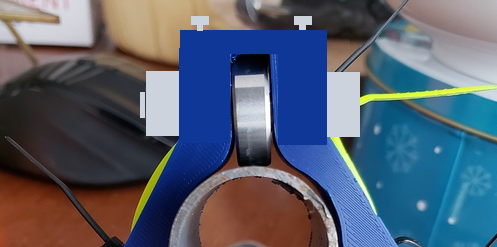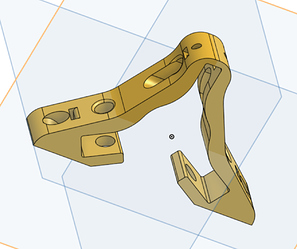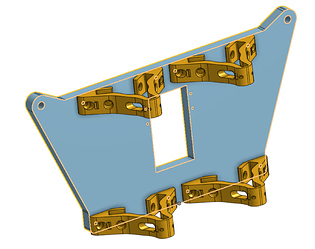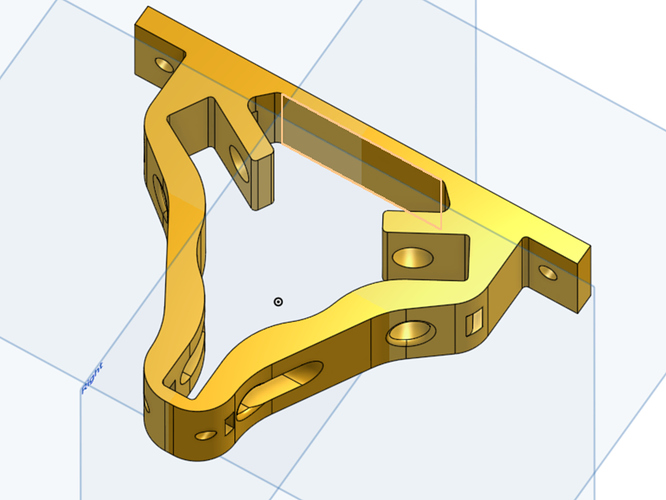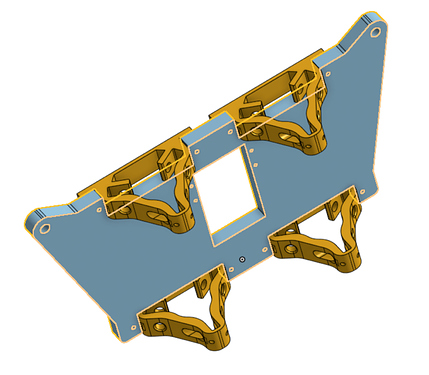How important is it that the tubes ride in the center of the bearings?
Crazy idea: the attachment of the brackets to the plate could be adjustable if there were slots that accommodated adjustment. Let’s assume this can be made adjustable and still secure.
Then you could install one side, hook it onto one rail, and install the other side so that it touches the rails. Slide inward until it presses against the second rail.
This would support the plate on the rails but it would not prevent lifting. Before we get to that, note there is some leeway (actually quite a bit) in the size of the tube that can fit on these parts. Smaller rails will ride closer to the blue parts, riding on one side of the bearings, and larger rails will ride farther from the blue parts, on the opposite side of the bearings. I think this can accommodate almost a half inch range of tube sizes, e.g. 1" to 1.5". Each 1mm increment in the tube diameter moves the point where it rides on the bearing by 0.5 mm, so a 7mm bearing width would allow up to 14mm of range in tube diameter. I would be reluctant to assume the rails can ride the full edge to edge 7mm of width so restricting to somewhat less range would be safer.
Then to prevent the plate from lifting off the rails, additional pieces can be slid under the tubes and anchored to the plate.
These smaller parts on the underside will not be able to accommodate as wide a range of tube sizes, so there will need to be several parts, each of which accommodates a narrower range of tube sizes. But the adjustment/installation process does allow for some tolerance. The parts do not need to be precisely matched to the tube size and if someone screws up it’s relatively easy to print new ones for just those parts.
One disadvantage, which I think it a disadvantage for any adjustable system, is how to get a non-expert to get the “right” amount of tension. To “press lightly and tighten it down” can yield different results for different people. But any adjustment system will probably have this issue.

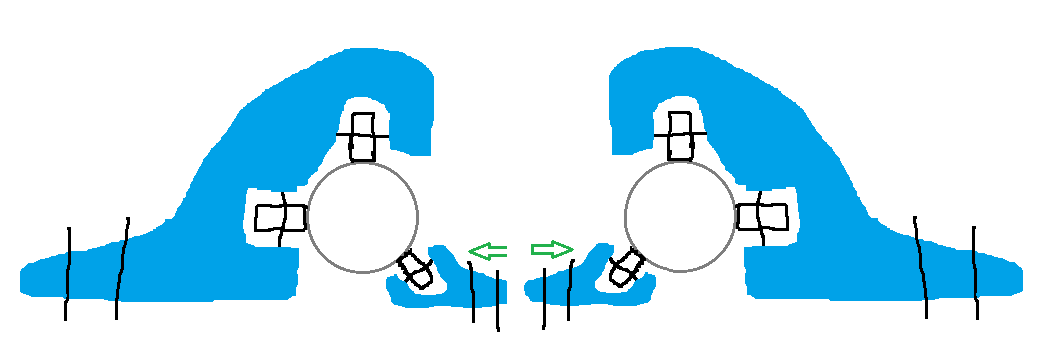



 : the angle between the bearings determines how much the position on the bearing changes in response to the diameter of the tube. Larger angles produce a larger difference in position and smaller angles produce a smaller difference in position, for a given change in tube diameter.
: the angle between the bearings determines how much the position on the bearing changes in response to the diameter of the tube. Larger angles produce a larger difference in position and smaller angles produce a smaller difference in position, for a given change in tube diameter.